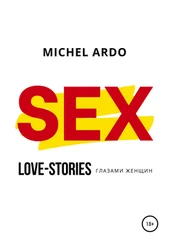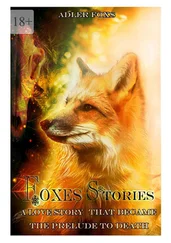He thinks instead of the first time he heard Pictures at an Exhibition . His best friend in high school, Sal Rio, who played Fender bass in the band they’d started, had on an impulse stolen a Lincoln left idling in a valet parking lot. Their plan was to drive to Toronto, where Miles Davis was supposedly playing at a jazz festival. Neither Ned nor Sal had been to Canada. Instead, high, and joyriding after midnight, they cruised onto the Chicago Skyway, the city aglow beneath them. Ned punched on the stereo and when the orchestral version of Pictures at an Exhibition blared out they both began conducting wildly—not that either of them knew what was playing. When Sal dumped the car the next morning, he said, “Man, never made it to Miles, but all was not lost—we got to hear that Russian motherfucker.” All was not lost , Ned thinks. After that night, it became their go-to phrase and still makes him smile.
Pictures over, Ned turns off the radio and makes a left into the Dunkin’ Donuts that has lit the end of his block for the three years he’s lived in the neighborhood. He’s never had the urge to stop there before. Maybe it’s where that cop car was racing from. Ceil claimed their coffee was good. If he’s going to do something so peculiar as to stay up late watching a film that more than one critic complained was, at a hundred and thirty-five minutes, too long, a coffee is in order. He doesn’t want to drowse off and miss the answer to Bening’s question about vanishing.
A woman with lapis-lidded, sleepy eyes, a gold-studded nostril, and a caste mark that looks like misapplied nail polish glances up expectantly when he enters. Her face appears disfigured by a mole on her cheek, but as he approaches the counter, Ned realizes that the mole is the microphone of her headset. “The usual?” she asks.
He isn’t sure whether the question is addressed to someone she’s speaking with on the microphone or to him. She smiles, waiting for an answer.
“Depends on what’s usual,” Ned says.
In the hygienically bright lighting, the trays of frosted donuts look like replicas. He notices a surveillance camera and has a tactile sense of being filmed. It’s as if he’s stepped into a scene of infinitely repeated takes.
“Sorry, I thought you were someone else,” she says. Her singsong accent would be perfectly in character if she were playing an Indian woman who works late nights at a Dunkin’ Donuts. “He always has a small black coffee and a Bavarian Kreme.”
“Good by me,” Ned says. He’s impatient to step back out into the hypnotic night, but the woman takes her time, selecting a donut, artfully creasing the bag, then fitting with inordinate care the lid on the coffee cup that reads America Runs on Dunkin’.
“Two eighty-two,” she says, and, when Ned digs into his jeans pocket, she adds, “He always gives me a fiver. Tells me, ‘Keep the change, donut girl.’”
“Maybe that handsome guy you thought was me will come by later,” Ned says, handing her a five.
“No,” she says, “no cabs tonight.”
“He takes a cab here?”
“ Drives a cab. He’s never come in, just goes through drive-through. He always jokes I’m the most beautiful woman in the donut shop.”
“Keep it,” Ned says, and she stuffs the change into a Styrofoam tip cup on the counter. He doesn’t call her donut girl. Their conversation feels scripted enough already. It was a mistake to stop here. Not only has the spell of what had come to seem like a quest been broken, but a night that seemed spontaneous now seems manufactured. The snow is real , Ned thinks, and the music . All is not lost .
“I told him it was my last night working here,” she says. “I just wanted to say goodbye.”
* * *
Ceil was right about the coffee—strong with a hint of licorice—but whoever his cab-driving doppelgänger is doesn’t have the same taste in donuts. Ned crushes the bag with the half-eaten Bavarian Kreme inside and lobs it into a wastebasket. He moves his laptop from the bedroom that serves as an office to an end table in the living room, inserts the DVD, and turns off the only lamp burning in his apartment. He tries to imagine Ceil alone in a dark movie theater years earlier, gazing at a panoramic screen that properly conveyed the big-sky landscape. Or maybe she saw it on a little seat-back screen, during a flight from London or Brussels. Back then, if she wasn’t traveling for her work with a human rights organization, they’d spend every weekend together. It surprises him that he never asked her where she’d seen the movie. He’s watching it now to see it through her eyes.
From its early scenes on, Open Range is a love story between cowboys, a Brokeback Mountain without kisses. Driving longhorns before him, a grizzled Robert Duvall gallops across the iconic landscape and one of the cowpokes remarks, “Old Boss sure can cowboy, can’t he?” Costner answers, “Yeah, broke the mold after him.”
Earlier, Ned had skimmed an interview online in which Costner said that “ Open Range starts with language.” The movie’s dialogue is, as the reviews noted, a rehash of other westerns. Usually Ned avoids reading reviews beforehand, so as not to ruin any surprises, but there aren’t any surprises in Open Range , unless its degree of sentimentality qualifies. Costner’s Charley Waite has a cute mutt that follows him on the trail. Ned knows from the reviews that the dog is marked for death; he’d have guessed it anyway. It brings to mind Hondo , which Ned saw as a child, in which Apaches kill John Wayne’s dog , Sam—Ned still remembers the name. Despite all the people slaughtered in Hondo , the only loss Ned really felt was the dog’s. He wonders if a young Costner felt the same for Sam and never forgot the effect, both the loss and the justification of violence that went with it—clearly such savage dog-killers deserve extermination. Costner has already used the cruelty-to-canines ploy in Dances with Wolves. Open Range ups the ante. As if one murdered dog isn’t enough to establish that Charley Waite—no matter how many men he’s gunned down—has a gentle heart, there’s a scene where he risks his life to save a puppy from a flash flood.
Annette Bening doesn’t appear until partway through. When she does, Ned is suddenly, nervously alert. He listens for the question about vanishing to be posed in Bening’s voice rather than in Ceil’s. It’s not a question for the early stages of a relationship, but Ned knows that the film has reached the point when that question, and its answer, must be coming.
In the online interview, Costner said he thought Bening was “very heroic” for playing a woman her own age without wearing makeup. It gives her a mature, sympathetic look that’s fitting for the nurse she plays. Ned imagines that it’s a look Ceil could identify with, as she, too, was heroic about makeup. But then Ceil’s face was still unlined, except for a worry wrinkle across her forehead, visible when she wore her amber hair tied back. The corners of her eyes crinkled as if she were squinting against the wind when she smiled. Ned can visualize her pale blue, windblown eyes, but not her face. Ceil traveled regularly for work, and early in their relationship, when they didn’t see each other for a couple of weeks, he’d tell her that he was in danger of forgetting what she looked like. She’d pretend to be exasperated that he could forget so easily. He was kidding but only in part; after each absence the beauty of her face struck him anew. That was true of her nakedness as well. To remove her clothes was to release light. He’d watch her dressing or undressing in the mirror as if not daring to look directly into brightness. He wonders now what else he didn’t look at, what else he didn’t see.
Читать дальше












